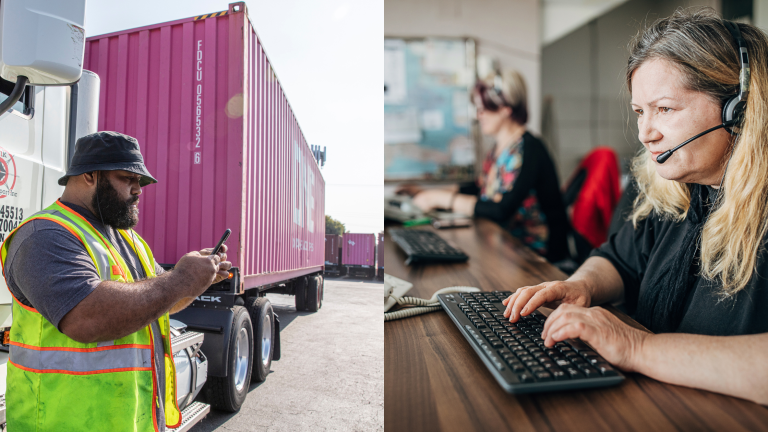Freight damage may only occur in less than 1% of shipments, but with almost 50 million tons of freight moved daily, that equates to around 500,000 tons of freight damaged per day. Lost or damaged freight can cost transportation companies and their clients thousands of dollars. It can also hurt your reputation and relationships with customers. Freight damage is often preventable with a few best practices to keep your freight safe.
Package Your Freight Properly
Proper packaging is instrumental to the safe transport of freight from Point A to Point B. Preventing damage starts with packaging the freight in a way that will minimize movement. Palletizing your freight, for example, can add an extra cushion to prevent potential damage. Pallets are more inexpensive to ship than multiple loose boxes, and can reduce the odds of freight damage. If your shipment is fragile, you must take other steps to properly package for protection, such as:
- Seal boxes with good-quality tape
- Use reinforced tape that will hold up in all conditions
- Shrink wrap your freight
- Use crates and pallets
- Organize freight with the heaviest on the bottom
- Place empty flat cardboard between boxes
- Use other impact protection, such as bubble wrap
- Use corner beads in boxes
- Add top pads and straps for stability
- Post visible labels
You must first understand your cargo before you can package it properly. You will not ship bottled cargo, for example, the same way you would ship drummed cargo. Understand the nature of your freight to identify the best packaging methods to ensure its safe delivery. Your cargo may be fragile, sensitive to temperature, sensitive to water, etc. Choose your packaging according to what will help the freight be as durable as possible for the trip. Don’t cut costs when it comes to packaging. Get high-quality packaging materials to avoid expensive damage in the future.
Label Cargo Correctly
Cargo loaders may not know the proper way to handle freight without labels that give them instructions. Label each carton, box, or pallet with the information cargo loaders need to optimize freight safety. If a box needs to remain standing one way, for example, a This Way Up sticker can ensure proper handling. Labeling freight correctly is critical in making sure it gets to the final destination in one piece. It is also important to label hazardous materials, for the safety of cargo loaders and the truck driver.
Stow Freight Carefully
The way you stow freight in the bed of a truck can determine how much it will shift during transport. Excessive shifting could damage the freight. Stow goods in a way that is uniform and stable, with even weight distribution across the bed of the truck. Stow the goods in such a way as to minimize the possibility of shifting or falling cargo in transit. If space remains between boxes or pallets, invest in dunnage materials or cargo nets to absorb impacts and protect your freight. Consolidate shipments and move full truckloads as often as possible.
Taking extra care in how you package and stow your freight can minimize the odds of expensive damage during transport, saving you money and keeping your clients happy.
Editor’s note: This blog was originally written for the GTG Technology Group, How to Avoid Damage to Your Freight.




